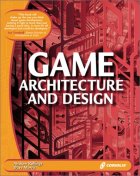In this completely revised and updated pocket reference, Jennifer Niederst, the author of the best-selling Web Design in a Nutshell, delivers a complete guide to every HTML tag. As with O’Reilly’s other pocket references, this handy book offers the bare essentials in a small, concise format that you can carry anywhere for quick reference. This guide will literally fit into your back pocket. Each entry in the book is devoted to the description of a single HTML tag, its standard usage, information on the tag’s attributes, browser support (for Netscape Navigator, Microsoft Internet Explorer, and Opera), and support for WebTV. Niederst puts the tags in context, indicating which ones are grouped together. She also offers bare-bones examples of how standard web page elements are constructed. All the tag-by-tag descriptions in this new edition have been brought up to date with the current HTML specification (4.01), and the book includes useful charts of character entities and decimal-to-hexadecimal conversions. The HTML Pocket Reference, second edition is an indispensable reference for any serious web designer, author, or programmer.
Game architecture and design
12 05 2008Game writers have a hard lot. In order to compete, they’re expected to write fantastic works of art and action that feature spectacular visual and physical effects, and which can render those effects with great speed. If they don’t write for the latest hardware (which is often barely stable), the designers end up with something that looks antiquated. In the end, as well, there is the target market: Mostly males between the ages of 15 and 30, who have sharpened their volatility of taste to a fine edge. Game Architecture and Design is a protracted meditation on what makes a game (and a game development company, and a game developer) good.
This is not a programming book; it is a design book. Andrew Rollings and Dave Morris do talk about game architecture, and pick apart some top games with state diagrams and sketches of class hierarchies, but that sort of content is in the minority. Mostly, the authors provide informed opinions about bigger engineering decisions, such as the question of whether to use Microsoft DirectX or OpenGL, or how to spread processor cycles across artificial intelligence and rendering operations. They make frequent reference to successful (and failed) games, explaining why each might have worked out as it did. –David Wall
Comments : Leave a Comment »
Tags: Computers, computing, Creativity, data structures, design, development, game, game design, game development, game programming, Game Theory, gamedev, games, games design, gaming, loc:boston, non-fiction, office, Programming, read, reference, rollings, software design, Software Engineering, textbooks
Categories : New Books

